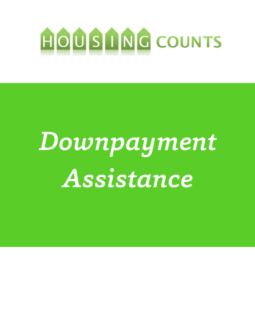Create and Expand Downpayment Assistance
Downpayment assistance programs are a tool for state and local governments to expand homeownership opportunities for moderate-income families and individuals. These programs work by providing assistance with downpayments. With this assistance, people can take out mortgages with lower payments. This makes homeownership possible for families that would otherwise have been unable to afford it. Sometimes downpayment assistance is provided in the form of a grant or a forgivable loan. In this case a new grant for the full amount may be necessary to serve each additional family. Other programs recycle downpayment assistance by making the assistance a loan that the families are required to repay. In many cases, the repayable loans include deferred payment and low to no interest in order to take into account the limitations of the borrower. This strategy allows the community to help more people without requiring additional funds.
Why is it important to recycle downpayment assistance?
There are limitations on the funding of housing programs that target people with lower-moderate incomes. As much as we would like to have funds to help everyone, we must face the reality of limited budgets and resources. There is quite obviously a greater demand for downpayment assistance than the limited public funds can supply.
In order to make these limited funds go as far as possible many communities have decided to recycle their funds. This means that the funds that are used to help homebuyers are later repaid and then used to help a different homebuyer. In general, there is a trade-off between the benefit of recycling funds households and the administrative cost of handling the recycled funds. For very small amounts, recycling may not be cost-effective. But for more substantial amounts recycling is an efficient use of government funds. A good rule of thumb is that recycling amounts greater than $5,000 are usually cost effective.
In Minnesota there are several non-profit organizations that administer local loan programs for a small fee. This reduces the administrative burden for many small local governments and provides for a more efficient review and distribution of the limited funds.
In many cases, downpayment assistance loans are structured as no- or low-interest mortgages. To avoid increasing a households’ monthly housing costs, down payment assistance loans often take the form of a “silent second mortgage,” in which no payments are due until the home is sold or refinanced.
In neighborhoods that experience above average home appreciation the original assistance is not only recycled but also keeps pace with the increase in housing prices. A way to preserve the buying power of public funds against a rise in home prices is to include shared equity homeownership criteria. However, in the current economic recession a shared equity approach may not be appropriate given flat or falling housing prices and thus should be carefully evaluated.
Where are these policies most applicable?
Recycling downpayment assistance is most important in communities with programs that have to provide more than a minimal level of assistance. Such communities often have large gaps between the cost of entry-level homes and what working families and individual can afford. This means that any assistance must be on a larger scale in order to make homeownership possible. When prices continue to rise, recycling the assistance or using a shared equity program can help to defray the cost of the assistance.
The Come Home 2 Edina program and the Bridge to Success: Contract for Deed program help prepare families for homeownership and provide financial assistance.
